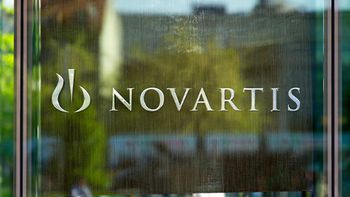
- Pharmaceutical Commerce - May/June 2017
Survey tracks evolving health economics function in pharma
Cutting Edge report finds continued growth in headcount
In recent years,
the drumbeat for providing meaningful clinical and economic information on newly launched drug products has been deafening—there is likely to be no new product of any commercial significance being launched without such data. This trend, in turn, is transforming pharma interactions with healthcare providers (HCPs) and, equally importantly, health plans and managed care organizations with formularies that make or break a drug’s launch. Cutting Edge Information (Research Triangle Park, NC), a market research firm, finds that pharma field forces are evolving into a range of job titles all disseminating various types of health economics and outcomes research (HEOR) data. They include traditional job titles like medical affairs and medical science liaison (MSL), to which are being added managed care liaison (MCL), health outcomes liaison (HOL) and more.
A new Cutting Edge report,
Health Economics Field Forces
, finds that the HOL job title is more closely aligned with the medical affairs side of an organization, while the MCL role is more closely aligned with commercial operations. MCLs interact primarily with population health decisionmakers, such as payers and pharmacy benefit managers (PBMs), while HOLs interact with both population health decisionmakers and HCPs. There are regulatory issues at stake as well; typically, commercially oriented field forces cannot talk about off-label uses of drugs, while medical affairs and MSLs generally do not engage in pricing or reimbursement discussions. But the lines are blurring. Cutting Edge draws a distinction between Top 10 global pharma companies and Top 50 ones: “Unsurprisingly, surveyed Top 10 company teams are far more likely than surveyed Top 50 company teams to have HOL, MCL and health economics MSL groups, as the latter have fewer resources.” In fact, 57% of Top 50 companies have no MCL field force at all, relying on MSLs and others to convey health economics data.
Across the 20 or so companies polled for the report, average growth of health economics teams was 18% in headcount in 2015, and 14% in 2016. (“Teams” range from 0 to 30 or so FTEs; and an individual company can have multiple teams, depending on how target audiences and therapeutic areas of coverage are arranged.) The report also provides details on educational backgrounds, experience, training and compensation of the health economics field forces.
The report is available for purchase at
Articles in this issue
over 8 years ago
The sales rep study I’d like to seeover 8 years ago
Is your corporate board equipped to monitor incentive programs?over 8 years ago
2017 Product Security Reportover 8 years ago
Compliance Package of the Year goes to Merck’s Zepatierover 8 years ago
How cloud-based IT systems address FDA validation requirementsover 8 years ago
Future look: The Impact of Biosimilars on Oncologyover 8 years ago
New science energizes the cancer marketover 8 years ago
A Conversation with John Chiminski, Catalentover 8 years ago
Defining the digital opinion leaders (DOLs) in healthcareNewsletter
Stay ahead in the life sciences industry with Pharmaceutical Commerce, the latest news, trends, and strategies in drug distribution, commercialization, and market access.




